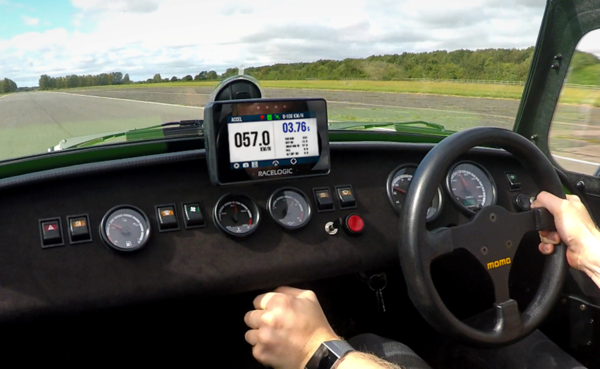02 Installing your Performance Box Touch V2 in the Vehicle
Installation
| The battery is connected to Performance Box Touch with a Richter mounting system on the rear of the unit. Insert the prongs from the back of the battery into the rear of the Performance Box Touch unit and push upwards to secure. |
 Richter mounting system on the back of Performance Box Touch |
|
Connectors
| You can find more detailed connector information on the PIN OUTS page. |
Left Side

Right Side

Mounting
| Performance Box Touch comes supplied with a Suction Cup Windscreen Mount (ACS318MOUNT) so you can mount it on the vehicle's windscreen. It attaches to the Richter mounting system on the back of the unit, or at the back of the Battery if this is connected to the unit. |
|
|
Richter Mounting system on Suction Cup Windscreen Mount (RLACS331) |
| Insert the prongs from the mount into the back of the unit or the battery and push upwards to secure. Attach the suction cup to a suitable location on your windscreen and adjust as necessary. | |

Satellite Reception
| Performance Box Touch has an internal patch antenna. This means that, in many circumstances, the unit does not require an external antenna if it has a clear view of the sky without any interference (e.g. roof bars, athermic windscreen, windscreen wipers). However, if you are struggling to maintain a stable satellite lock (indicated by a flashing red satellite icon), you can use an external antenna (RLACS284). |  |
| IMPORTANT The first time you use the unit, it may take 10 to 15 minutes to acquire satellites fully. After this, it will usually only take 1 to 2 minutes to acquire satellites. |
|
External Antenna (If Required)
|
The placement of the GNSS antenna is crucial to the quality of the data recorded by Performance Box Touch. Any metal close to a GNSS antenna can unpredictably disturb the signal due to interference from reflections of weak GNSS signals. For best results, use the antenna in the centre of a metal roof at least 5 cm away from any roof bars or radio antennas. Do not mount the antenna close to the edge of the roof as reflections from the ground may interfere with the signals. Avoid the edges as reflections from the A-pillars will cause problems. Mount the antenna as high up as possible and keep it above any roll bars. Pieces of metal close to and above an antenna will badly disrupt the GNSS signal. |
| If the vehicle you are using does not have a metal roof, you need to place the GNSS antenna on a flat piece of metal at least 10 cm in diameter. If this is not possible, you can use copper or aluminium foil to create a shaped ground plane underneath the antenna. For example, on a fibreglass roof, mount the antenna on top of the roof, and place some adhesive-backed metal foil underneath, on the inside of the roof. |
|
|
Acquiring Satellite Lock
| Tall buildings or trees can block GNSS signals, causing a reduction in the number and quality of satellites being tracked. The reduced number of satellites can lead to inaccurate position measurements and a noisy velocity signal. |
| GNSS works best in open areas. Avoid tree-lined roads. |
GPS Coldstart
|
If Performance Box Touch is struggling to acquire a satellite lock, you may need to perform a GPS coldstart. This may be necessary when the unit hasn’t been used for several days or has moved location significantly since it was last used. To perform a coldstart, press the COLDSTART button in the Diagnostics Settings menu. |
.png?revision=1) |
| When you press the button, the unit will make an audible sound and you will see a ‘PLEASE WAIT’ message counting down from 3. Until the satellite lock has been acquired, the number of satellites will be displayed as '00' and the GPS status will show ‘SEARCHING FOR SATELLITES’. It will take approximately 25 to 30 seconds for the unit to reacquire the satellite lock. |


.png?revision=1)